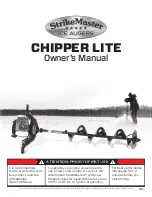
■
Formant Control
Each formant operator has a range of parameters which determine its shape and therefore contribute to the overall
sound: center frequency, level, width, and skirt (the shape of the “flare” at the bottom of the formant’s bell-shaped
response curve).
As an example, suppose we have a formant configuration that produces an “a” type sound. This can be changed to
an “i” sound by shifting the center frequencies and levels of the formants. If this is done in real time at an
appropriate speed, we produce the sound “ai”.
This type of formant control can be accomplished in the FS1R in several ways. First, independent frequency and
level envelope generators are provided for each operator, so time-based timbral shifts like the one described above
can be achieved entirely by using the envelope generators. Second, any of the available controllers can be
assigned to the formant parameters — the control knobs, a modulation wheel, foot controller, etc. — to allow realtime
manual control while playing. Either of these methods of formant control are all you’ll need to create musical sounds
for most applications, but the last and most complex type of formant control on the FS1R is made possible by
“FSeqs” (Formant Sequences), described in the following section.
=“a”
=“i”
Level
Width
Skirt
Center Frequency
9
1/FS1R/OM/E.qx 10/19/98 6:28 PM Page 9
Summary of Contents for FS1R
Page 1: ...OWNER S MANUAL ...
Page 87: ...3 FS1R UTILITY E qx 10 20 98 1 17 PM Page 87 ...










































